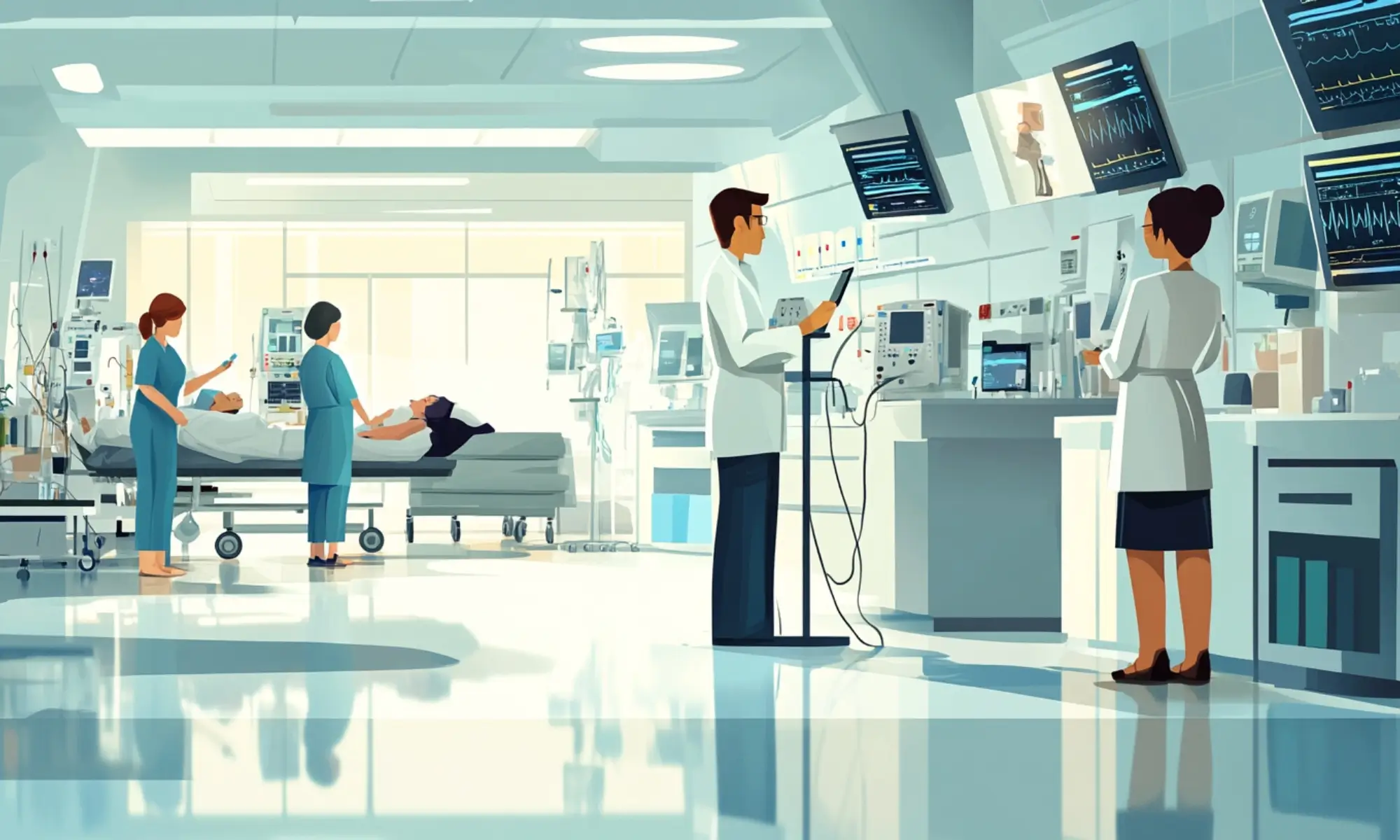The concept of a “workplace” is deeply woven into the fabric of our modern society. But what exactly defines a workplace? Is it merely a physical space where we clock in and out, or is there more depth to its significance? In a rapidly evolving world where work dynamics shift and technology transforms traditional norms, understanding the essence of a workplace becomes paramount.
In this blog, we will delve into the definition and meaning of the term “workplace” and explore a range of examples that illustrate its diverse manifestations. Whether you’re a business owner seeking to optimize your work environment or simply a curious individual pondering the nature of workspaces, this piece aims to provide clarity and insight into the multifaceted world of workplaces.
Workplace Meaning and Definition
A workplace refers to a specific location or environment where individuals engage in tasks and responsibilities assigned by their employer or organization. This setting can vary widely based on the nature of the job, spanning from indoor office spaces to open-air construction sites. Each industry has unique demands and requirements, determining the type and structure of the workplace suitable for its operations.
The workplace concept has evolved in recent years due to technological advancements. The rise of digital tools and high-speed internet connectivity has introduced the idea of virtual workplaces. This allows professionals to perform their roles remotely, often from their homes or other preferred locations. This shift not only provides flexibility but also redefines the boundaries of traditional workplaces.

Different Examples of Workplaces
Workplaces can vary widely based on the industry, the nature of the job, and the tasks involved. Here are some different examples of workplaces:
- Offices: These are commonly found in sectors like finance, technology, administration, and marketing. They can range from high-rise buildings in urban centers to small office spaces in suburban areas.
- Factories and Manufacturing Plants: These are places where goods are produced. They can include everything from car assembly lines to food processing plants.
- Retail Stores can be large department stores, small boutiques, or even pop-up stalls.
- Hospitals and Clinics: Medical professionals work here to provide health services to patients.
- Schools and Universities: These are places of learning where teachers, professors, and administrative staff work.
- Construction Sites: Here, structures like buildings, roads, and bridges are built from the ground up.
- Farms and Agricultural Fields: These are places where food is grown and livestock is raised.
- Restaurants and Cafes: Chefs, waitstaff, and managers work here to provide food services to customers.
- Warehouses: Large storage areas where goods are kept and from where they are distributed.
- Studios: This can include music studios, art studios, or film and television production sets.
- Research Labs: Scientists and researchers often work with specialized equipment to conduct experiments or develop new products.
- Gyms and Fitness Centers: Trainers and staff work in these environments to assist members in their fitness goals.
- Airports and Train Stations: These transportation hubs are workplaces for pilots, air traffic controllers, station managers, and many more.
- Ships and Oil Rigs: These can be both places of work and residence for crews who might be on duty for extended periods.
- Remote or Virtual Offices: With technological advancement, many individuals work from their homes or co-working spaces, connected to their teams through the Internet.
Each of these workplaces has its specific requirements, challenges, and dynamics. They’re tailored to the tasks and the people who work within them.

Steps to Creating and Maintaining a Safe Workplace
Creating and maintaining a safe workplace is crucial for employees’ well-being and success. A safe environment minimizes risks, prevents accidents, and enhances productivity. Here are steps to create and maintain a safe workplace:
- Risk Assessment: A foundational step, this involves meticulously identifying potential hazards in the workplace. It could be anything from machinery operations to repetitive tasks. Once identified, each hazard’s severity and likelihood should be evaluated, helping prioritize which risks need immediate attention.
- Develop a Safety Policy: This formal declaration of an organization’s commitment to safety. The policy should clearly outline safety expectations, responsibilities, and procedures. It acts as a guide for employees and managers, ensuring everyone understands their role in promoting safety.
- Safety Training: Regularly training employees to know safety protocols and identify and address hazards. This training should be updated with any changes in equipment, processes, or regulations. An essential aspect includes proper procedures for operating machinery, handling materials, and even ergonomic best practices.
- Personal Protective Equipment (PPE): PPE like helmets, gloves, goggles, and safety shoes are crucial in many workplaces. Organizations must provide suitable PPE for the job and train employees on its proper use and maintenance. It’s also essential to routinely inspect PPE for wear and tear, replacing it as necessary.
- Regular Safety Audits: Safety audits comprehensively review all safety protocols, ensuring they’re effectively implemented. Regularly conducting these audits, potentially with the insight of third-party experts, can reveal vulnerabilities before they become significant issues.
- Emergency Procedures: No one can predict emergencies, but preparedness can save lives. Detailed emergency plans should be in place for fires and chemical spills. Regularly practicing these plans through drills ensures everyone knows their role when an emergency arises.
- Maintain Equipment: Faulty equipment is a common cause of workplace accidents. Regular inspections and maintenance, following manufacturer guidelines, ensure machinery and tools function safely. Keeping a maintenance log can also help track and schedule necessary check-ups or repairs.
- Open Communication: An open channel where employees can report potential hazards or unsafe practices without fear of reprisal is invaluable. This helps identify unnoticed risks and fosters a culture where safety is a collective responsibility.
- Maintain a Clean and Organized Workplace: Clutter and disorganization can lead to accidents like trips or falls. Regular cleaning schedules, properly labeled storage areas, and clear pathways can prevent such mishaps.
- Continual Learning: Safety standards and best practices evolve. Keeping up with the latest research, regulations, and technologies is vital to stay ahead. Encourage participation in safety seminars, workshops, and certification programs.
- Health and Wellness Programs: Physical and mental health directly impact safety. Programs promoting healthy living, stress management, and regular health check-ups can prevent many issues before they become severe.
- Review and Update: Safety isn’t a one-time task. Procedures should be reviewed periodically, especially after any significant incident or introduction of new equipment or processes. Feedback from these reviews can refine current practices.
- Engage Employees: Employee involvement can lead to a more effective safety culture. Safety committees or focus groups can offer a platform for workers to share their insights, experiences, and suggestions, making them active participants in their own safety.
Prioritizing and implementing these steps can help organizations significantly reduce the risk of accidents and foster an environment where safety is everyone’s responsibility.

Role Of Workplaces In Productivity
The role of workplaces in productivity is multifaceted and profound. A well-designed and managed workplace can significantly boost productivity, while an ineffective or unsupportive environment can hinder performance and well-being. Here’s a breakdown of the relationship between workplaces and productivity:
Physical Environment and Ergonomics
- Proper lighting, temperature control, and noise management can dramatically impact an employee’s ability to concentrate and perform tasks effectively.
- Ergonomically designed workspaces, including chairs, desks, and computer setups, can prevent physical strain and the risk of repetitive strain injuries.
Tools and Technology
- Modern, efficient tools and technology can expedite tasks and reduce manual effort.
- A well-integrated tech infrastructure fosters collaboration and efficient communication.
Spatial Design and Flexibility
- An open-plan office might encourage collaboration, but private spaces are crucial for tasks that require deep concentration.
- Offering flexible spaces where employees can adapt based on their tasks can enhance productivity.
Wellness and Mental Health Support
- Workplaces that prioritize employee well-being and offer support for mental health can lead to higher morale and reduced absenteeism.
- Spaces for relaxation or short breaks can help employees recharge and return to tasks with renewed focus.
Organizational Culture and Community
- A positive, inclusive workplace culture fosters a sense of belonging, enhancing employee motivation and commitment.
- Opportunities for professional development and growth within the workplace can drive higher engagement and effort.
Clear Communication and Structure
- Clearly defined roles, responsibilities, and communication channels ensure everyone knows their tasks, reducing overlaps or gaps in responsibilities.
- Regular feedback and open lines of communication can help address issues before they escalate, maintaining a productive environment.
Safety and Security
- A safe workplace, free from health hazards and with proper security measures, ensures employees can focus on their tasks without fear or distraction.
- Regular training and updates on safety procedures can keep everyone aware and proactive.
Accessibility and Commute
- A workplace that is easily accessible reduces the stress and time wasted on long or challenging commutes.
- Options like remote work or flexible hours can also enhance productivity by catering to individual needs and circumstances.
Collaboration and Team Dynamics
- Spaces designed to foster teamwork and equipped with the tools for collaborative work can enhance the synergy between team members.
- Regular team-building activities or workshops can bolster team dynamics, leading to smoother project executions.
The workplace is not just a physical location where work happens; it’s a complex ecosystem interacting with various facets of an employee’s professional life. When optimized, it can be a significant catalyst for productivity and organizational success.

Good and Bad Workplace Types
Workplaces vary significantly in design, culture, management style, and more. These differences can profoundly impact employee morale, productivity, and well-being. Here’s a breakdown of characteristics often associated with good and bad workplace types:
Good Workplaces
- Supportive Culture: These workplaces emphasize teamwork, collaboration, and mutual respect. They value every employee’s contributions and promote a positive, inclusive environment.
- Clear Communication: In these settings, expectations are clearly set, feedback is consistent and constructive, and employees feel they have a voice that’s heard.
- Opportunities for Growth: Good workplaces invest in employee development through training, seminars, workshops, and a clear path for career progression.
- Work-Life Balance: They respect personal time, offer flexible schedules when feasible, and understand the importance of mental and emotional well-being.
- Safe and Comfortable Environment: The physical environment is well-lit, ergonomically designed, and free of hazards. Additionally, there’s a strong emphasis on mental and emotional safety.
- Effective Leadership: Leaders in these workplaces are approachable, lead by example, and are invested in their team’s success.
- Recognition and Rewards: Employee efforts are acknowledged and rewarded, fostering motivation and commitment.
Bad Workplaces
- Toxic Culture: These environments are riddled with office politics, backstabbing, and a lack of trust among employees and management.
- Poor Communication: Expectations are ambiguous, feedback is non-existent or overly critical, and employees feel unheard and undervalued.
- Stagnation: There’s little to no career growth or personal development opportunity. Employees feel trapped in their roles without any path forward.
- No Work-Life Balance: Excessive working hours, an expectation to be available round-the-clock, and little consideration for personal life are common.
- Unsafe or Uncomfortable Environment: The workplace may be physically uncomfortable, poorly maintained, or hazardous. Additionally, there might be no mechanisms to address bullying, harassment, or other psychological harm.
- Absent or Negative Leadership: Leaders might be disengaged from their teams or contribute to the toxic atmosphere through poor behavior and decision-making.
- Lack of Recognition: Employee efforts go unnoticed and unrewarded, leading to decreased motivation and feelings of insignificance.
It’s important to note that while these are general characteristics, every workplace is unique. Some might have a mix of both good and bad attributes. It’s crucial for organizations to regularly assess and adapt their workplace environment and culture to foster positivity, growth, and productivity.
Conclusion
The workplace is far from a static location. It is a dynamic space that mirrors the changing paradigms of our professional lives. It reflects culture, ethos, technological strides, and societal shifts. From traditional brick-and-mortar offices to modern virtual platforms, each manifestation of a workplace is a testament to human adaptability and the relentless pursuit of efficiency.
Understanding the nuances of what constitutes a workplace is essential for organizational success and appreciating the complexities of the modern working world. As we’ve journeyed through definitions, meanings, and varied examples, one thing stands clear: the workplace, in all its forms, remains central to our professional identities, driving both individual growth and collective progress.

